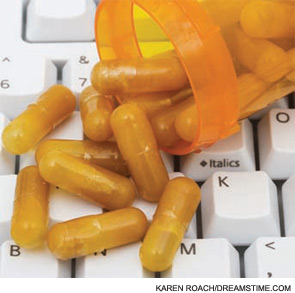You’ve bought an electronic medical record (EMR) with e-prescribing capabilities or stand-alone e-prescribing software and are enjoying the benefits of seamlessly writing a computer-generated prescription. Prescriptions are forwarded to the pharmacy where they enter the computer system exactly as they were sent. After all, that’s the benefit of e-prescribing, right?
But do you really know what happens to that prescription after you click send?
E-prescribing is the electronic transmission of a prescription to the pharmacy in such a way that the data go directly into the pharmacy’s computer system. In many cases, physicians click send to disburse prescriptions to the assigned pharmacy and assume that they are electronically prescribing, but they may actually be sending a computer-generated fax. In other practices, physicians who click send avoid sending the prescription directly altogether and transmit it to their in-office printer to be handed to the patient or manually faxed to the pharmacy.
Electronic or By Fax: Why Does It Matter?
Sending a computer-generated fax prescription is just that—a faxed prescription. The prescription must then be entered into the pharmacy’s computer system manually, which increases the chance for error. The Federal Register states that, “starting January 1, 2009, CMS, under the Medicare Modernization Act, will require that all Medicare Part D computer-generated prescriptions to comply with NCPDP Script standard, and thus be transmitted electronically and not via fax.”1 Not understanding your system and being unsure as to whether you prescribed electronically will not place you in compliance.

How To Confirm That You Are E-prescribing
Your e-prescription software or EMR representative should be able to work with you to confirm that your system is enabled to prescribe electronically to those pharmacies accepting electronic prescriptions. Physicians can also verify that their practice can establish an e-prescribing connection with pharmacies by visiting www.getrxconnected.com, taking the readiness assessment, and reviewing the list of connected pharmacies in their states.
In addition to the safety and efficiency associated with electronic prescribing, two-way connectivity is available with most chain and independent pharmacies. Two-way connectivity can help completely automate your prescribing system through fast and efficient communication. New prescriptions will immediately be transmitted to the pharmacies system, and refill requests can be sent directly to your EMR. Some pharmacies even notify you when the patient picks up his prescription and give a list of medications prescribed by other doctors and filled at that pharmacy.

